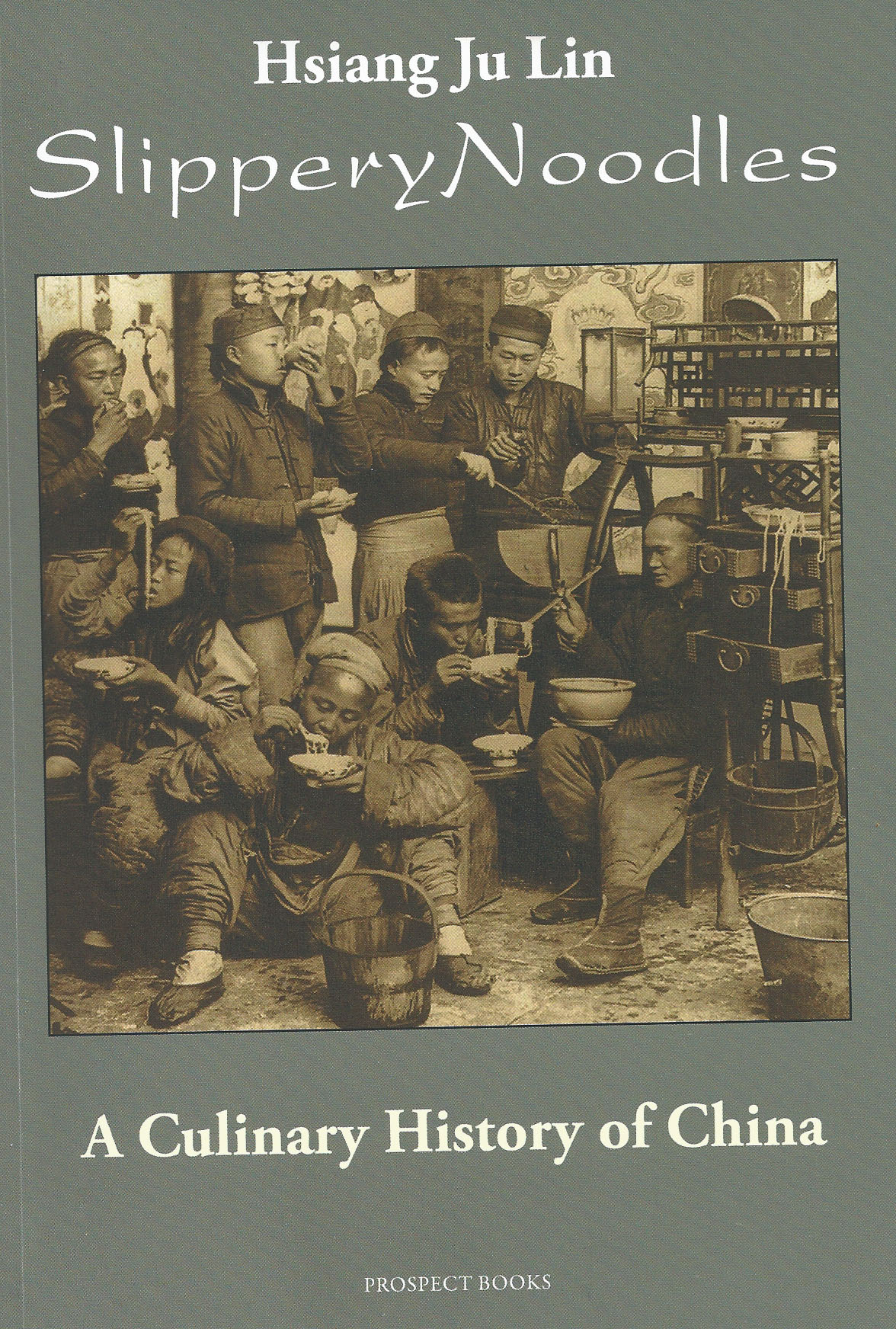|
Read 7012715 times
Connect me to:
|
Slippery Noodlesby: Ju Lin Hsiang
London UK:
Prospect Books 2015, Hardbound
ISBN: 978-1-909-248-37-3
Reviewed by: Jacqueline M. Newman
Spring Volume: 2016 Issue: 23(1) pages: 12 to 13
 This book is authored by a biochemist and pathologist who taught at the University of Hong Kong and at Houston’s Baylor College of Medicine. She is Lin Yutang’s daughter who with her mother mother co-authored Chinese Gastronomy published in 1955. Knowing that made me want to purchase it quickly; and I did. This book is authored by a biochemist and pathologist who taught at the University of Hong Kong and at Houston’s Baylor College of Medicine. She is Lin Yutang’s daughter who with her mother mother co-authored Chinese Gastronomy published in 1955. Knowing that made me want to purchase it quickly; and I did.
Loaded with tidbits of information, it is rich in detail about dishes, tastes, merchants, street foods, monks, and of course with recipes. Subtitled: A Culinary History of China, its forty-three chapters overflow with recipes from many Chinese written records she consulted, some dating back to the 5th century BCE. Not all, as written in those days were usable in my kitchen in these days. Named for one of its chapters, it boils over with information, and does need an index. The end does have a list of its one hundred nineteen recipes, blessings for that. Much good stuff is hidden in its pages, so do take notes when reading this volume. Most recipes are as originally written then translated into English. Their sentences, paragraphs, lists of one sort or another often have no amounts, no descriptions, and no information you may want to be able to cook with them. Many were unusable in our kitchen, perhaps in our mind, and as such most were not worth trying; a real pity. They are historical renditions that someone now needs to make ‘cook-able,’ ‘taste-able’, even understand-able. As is, they are not of real value. Even the book’s namesake, Slippery Noodles is a loose cannon because some sentences say it “may have begun around this time.” Soon thereafter some say ”a few decades after Jia;’ hardly enough even to place them on a time-line. The ‘NOTES’ after every chapter, cite what they were called then. The in The Food Classic, Shi Jing by Xien Feng (605 - 616 CE) says “Qing yi lu (yin she ben fu fen)“ by Tao Gu (902 - 970) ed. by Li Yimen, Wang Minde and Wang Zihui” and did give a page number that did not help this Chinese food expert who reads no Chinese. The “(ZPGC, 1985, p. 14) after it was of no help, either. A Chinese-speaking friend with an advanced degree tried to help but she could locate the source, and there was nothing else to help zero in on its date or anything else. Some recipes did tickle the mind, but often they were no better. This book does tell how Chinese cooking evolved over two thousand years and shows Chinese cuisine and its changing culture; but with many incomplete ideas. One paragraph says, ”An understanding of Chinese food history is hard to come by.” How true, even in this volume. Someone needs to write a follow-up volume to clarify the Silk Road, Making Yeast Cakes, Making Wine, Looking Back to Ancient Times, Eight Delicacies in Antiquity, The Preserved Egg, Bean Curd, The Book of Tea, Bird’s Nest, Domestic Duties, A Kitchen Timer, and other chapter titles. We agree that food and drink are not simple matters, as the author tells us in her Foreword. However, this book made my appetite whet for more detail. Anyone out there to satiate it? |

 This book is authored by a biochemist and pathologist who taught at the University of Hong Kong and at Houston’s Baylor College of Medicine. She is Lin Yutang’s daughter who with her mother mother co-authored Chinese Gastronomy published in 1955. Knowing that made me want to purchase it quickly; and I did.
This book is authored by a biochemist and pathologist who taught at the University of Hong Kong and at Houston’s Baylor College of Medicine. She is Lin Yutang’s daughter who with her mother mother co-authored Chinese Gastronomy published in 1955. Knowing that made me want to purchase it quickly; and I did. 